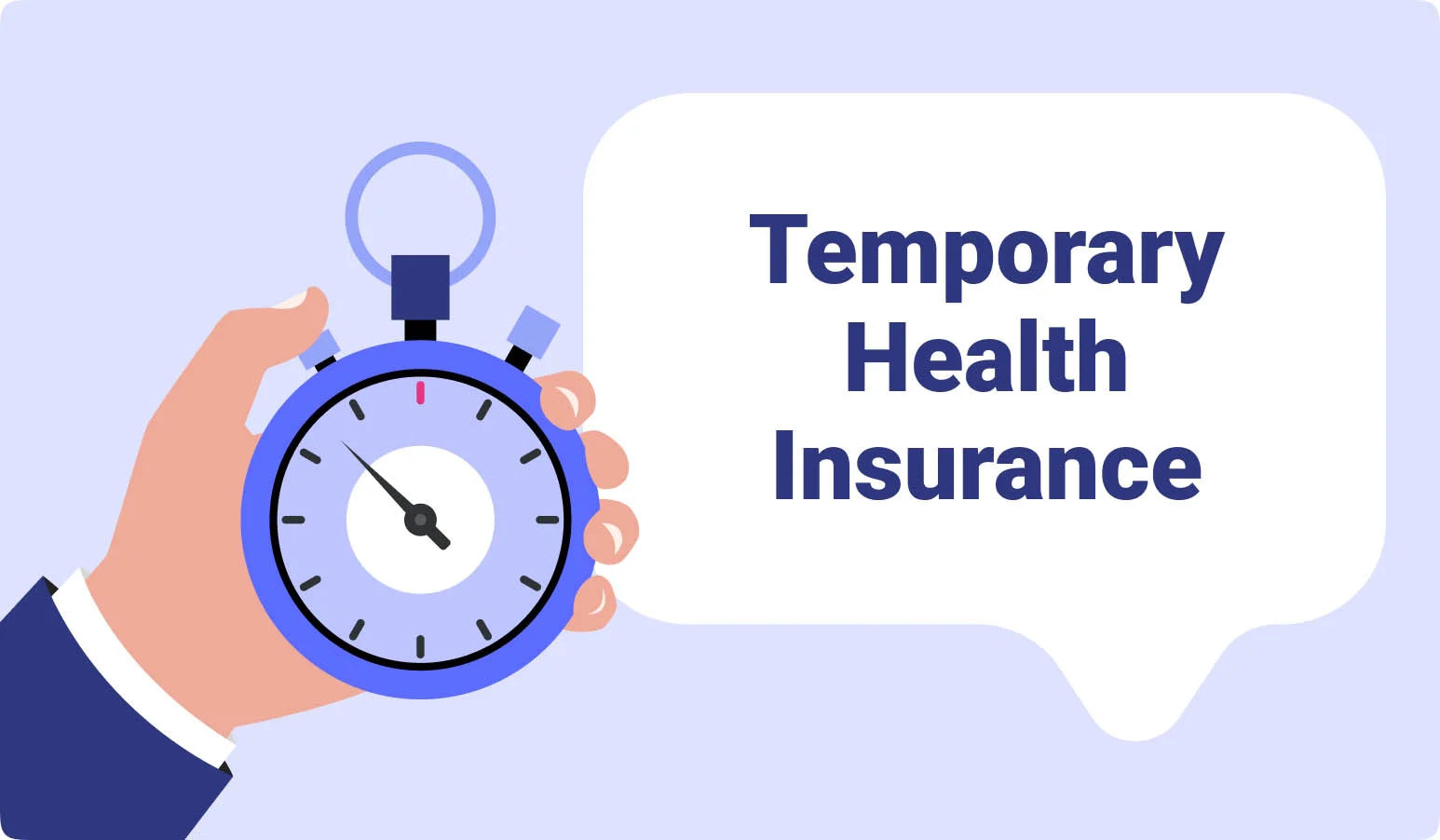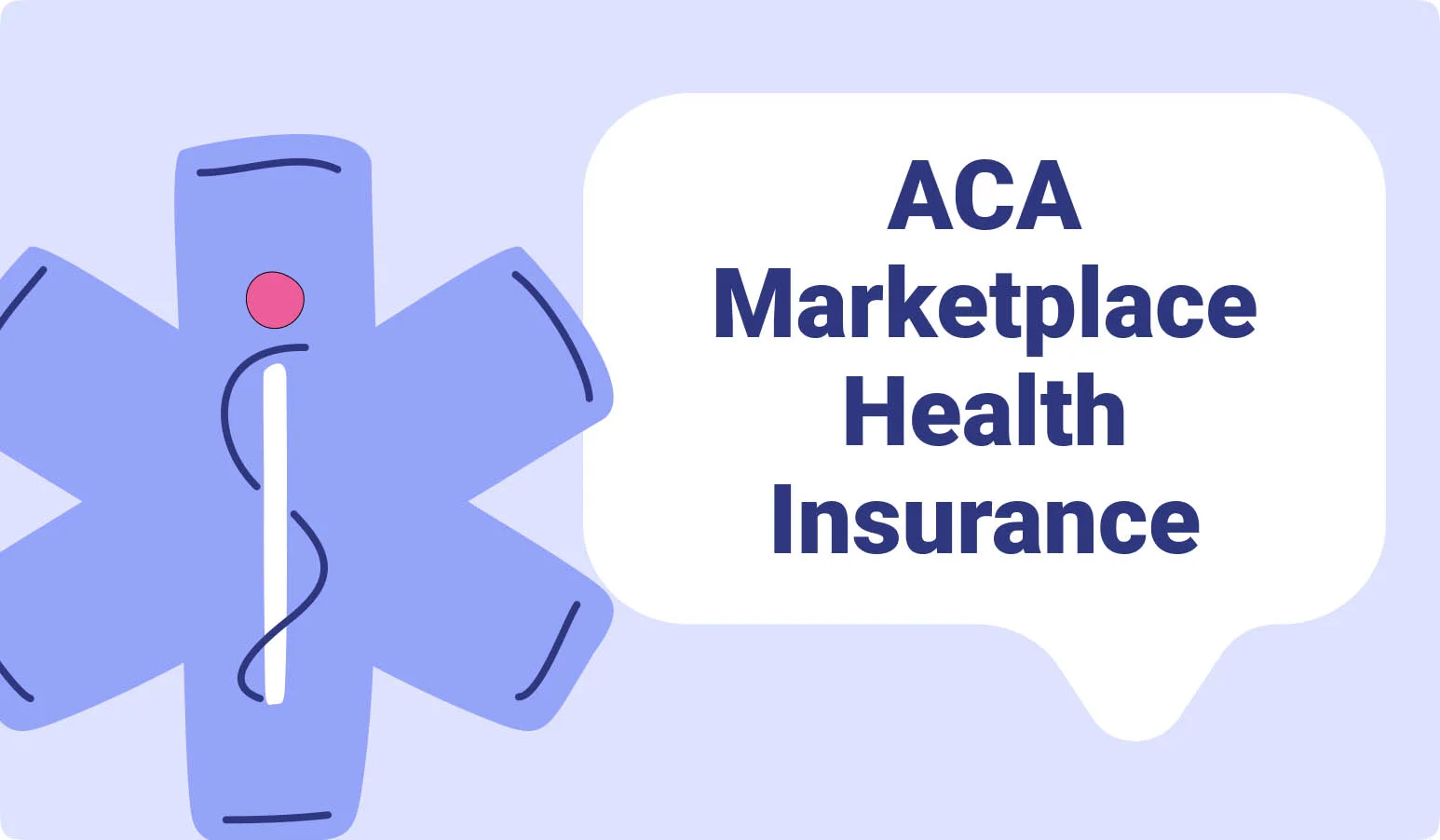UPDATED: OCTOBER 02, 2023 | 1 MIN READ

Every day, Americans deal with the effects of losing a job. And one of the most common issues they find themselves running into after losing a job is the need to continue having health insurance. If you find yourself in-between jobs and lack health coverage, you can take relief knowing there are options for temporary health insurance. Below we’ll look at these options and what they mean for you.
Health insurance between jobs
Health insurance coverage between employment can help you receive the necessary health care. Once your deductible is met, you and your policy can help cover the costs related to your healthcare expenses.
This means that preventative care is covered completely, at 100%. Without health coverage, you could pay out-of-pocket for any care you get.
Types of health insurance between jobs
Cobra
COBRA is one of the leading options for continuing health coverage when moving from one job to another. COBRA allows former employees and dependents to use their former employer’s group health coverage, even after leaving the business.
You can continue to get COBRA coverage for a maximum of 18 months.
However, you’ll be responsible for the total cost of the coverage yourself. One of the benefits of utilizing COBRA coverage is that it allows you to continue with your current health coverage, which means continuing to see the same physicians.
Once you leave your job, you’ll have 60 days to choose whether or not to accept COBRA, and from there, you’ll have 45 days to pay your first month’s monthly premium. But, this only applies to those employed with companies with 20 employees or more.
Spousal coverage
Health insurance through your spouse’s health coverage is probably the most straightforward way to obtain health insurance in-between jobs if you lose employer coverage during the open enrollment stage (usually starts in November and finishes in January). Your spouse can add you to an active health coverage policy at that point since they’ll simultaneously change healthcare coverage options. If you lose your job outside the Open Enrollment Period, you can still decide to join your spouse’s policy.
However, this is done during the Special Enrollment Period, 30 days after leaving your employer’s company. Getting insurance through your spouse’s employer-sponsored coverage is beneficial because it won’t cost as much as obtaining your private insurance, but you may experience more coverage limits.
Temporary health insurance
Temporary health insurance (short-term insurance) is a policy designed for 12-month periods or less. These policies don’t have the same guidelines and, therefore, don’t need to comply with regulations put forward through the Affordable Care Act.
These plans are generally more expensive if you have any pre-existing conditions, tend to be far more costly than other types of plans, and don’t cover benefits like prescription or maternity coverage. Temporary health coverage generally starts immediately, a huge perk for those who want to protect themselves against health emergencies.
Affordable Care Act Marketplace plan
If you find yourself suddenly employed, you can always obtain a health plan through the Affordable Care Act (ACA) Marketplace. If you quit or get laid off, you can obtain insurance during the Special Enrollment Period unless you lose your job during the same open enrollment timeframe (November 1 – January 15).
Medicaid
Medicaid is a state and federal-based insurance program offering low-income qualifying recipients low-cost or free health coverage. Unlike employer-sponsored health coverage, you generally won’t need to pay premiums.
States regulate the Medicaid program, which also means that eligibility requirements can vary depending on the state in which you live. The best way to determine if you’ll qualify for Medicaid coverage Is to contact your local Medicaid office.
Medicare
Many people who leave work may do so because they hit Medicare age. Medicare is an excellent option for those in-between work.
You can keep your Medicare coverage if and when you take another job, even if you accept employer-sponsored healthcare coverage. After you lose employer-sponsored health coverage, you can enroll in Medicare within the eight-month Special Enrollment Period timeframe.
COBRA: What you need to know

COBRA has Its pros and cons, but overall, it/s a good option for those seeking temporary health insurance. Below we’ll review COBRA’S enrollment periods and how you prepare to apply.
Enrollment periods
There are two significant deadlines to keep in mind when dealing with COBRA. Once you lose your health insurance through your former employer, you’ll have 60 days to enroll in COBRA coverage. The other major deadline is that once you sign up for COBRA, you’ll have another 45 days to send the first month’s premium payment.
How to enroll in COBRA
To enroll into COBRA, you’ll technically be enrolled again into your former health plan but will be responsible for all costs. You must contact your company’s human resource department or third-party administrator.
You’ll complete an enrollment form by paper application or online. Your insurance will start again once you pay any premiums from the day you lost health coverage.
Pros
COBRA pros include the opportunity to continue group health insurance for now. This means that you can continue seeing the same doctors you’re used to and can plan on maintaining the same deductible.
Cons
COBRA can be far more expensive than other insurance alternatives. Since your employer will no longer contribute, you’ll be responsible for your plan’s premium. The average premium for COBRA coverage is around $645 per month.
Spousal coverage: What you need to know

Adding to your spouse’s coverage may be the best route for those looking for affordability. These plans are relatively easy to get onto and are less expensive than other temporary health insurance options.
Enrollment periods
When you lose your employer-sponsored health coverage, you’ll have 30 days to enroll in your spouse’s insurance plan through the Special Enrollment Period timeframe.
How to enroll in spousal coverage
Insurance carriers may have different rules about when enrollment periods run, but most provide 30 days to enroll once you lose coverage through your job. You must immediately alert your spouse’s health insurance provider and complete all necessary paperwork.
Some of the required paperwork includes proof of the loss of your coverage. At that point, you can be added directly to your spouse’s policy, and you’ll likely see an increase in your monthly premium expenses.
Pros
Adding to your spouse’s insurance coverage is far more affordable than purchasing a stand-alone policy through the Marketplace or COBRA. Another perk of being added to your spouse’s policy is that both your and your spouse’s medical expenses count towards the out-of-pocket maximum, which means you’ll likely see 100% of covered services and costs taken care of at a much faster rate.
Cons
One of the downsides of being added to your spouse’s health insurance is that you may lose access to your current physicians, treatments, and more. And if you want to continue seeing those physicians, you’ll likely need to pay out-of-pocket. You’ll often face more limitations as to what’s a covered service.
Temporary health insurance: What you need to know

While temporary health insurance tends to be more affordable, It doesn’t equate to a good fit for everyone needing short-term insurance solutions. However, If you don’t have any pre-existing conditions, this could be the right type of plan for you.
Enrollment periods
Temporary health coverage carries no specific enrollment periods. So this means that you can enroll in this coverage at any time your job ends and you decide to obtain insurance. Once you apply and enroll in the insurance, policies take effect within two weeks.
How to enroll in temporary health insurance
To enroll in temporary health insurance, you’ll first want to browse and choose your plan. Then, you’ll complete an application online. Finally, you’ll pay your first premium and have active insurance with an insurance card.
Pros
Temporary health Insurance tends to have affordable low premiums, making it an excellent choice for many. You can also customize your Insurance coverage based on what you need or want the most. And people love this insurance for the fact that there are typically no cancellation fees if you wish to end the coverage whenever you’re ready.
Cons
Although these plans carry low premium expenses, the out-of-pocket costs can increase quickly. The deductibles are generally more expensive than traditional health plans, which means more out-of-pocket.
Short-term plans usually don’t offer coverage for pre-existing conditions, so if you live with this, these plans may not benefit you. And finally, short-term insurance plans may not be available for everyone throughout the US, as it’s been banned or regulated throughout some states.
Affordable Care Act Marketplace plan: What you need to know

You can purchase a health care plan directly through the ACA Marketplace to get the necessary insurance for you in-between jobs. These types of plans offer both positives and negatives.
Enrollment periods
If and when you’re ready to enroll in an insurance program, you must ensure you do so during the specific enrollment timeframes. In the 60 days following the loss of your employer-sponsored health insurance, you’ll be eligible for the Special Enrollment Period, in which you can apply for insurance through the Marketplace. But if you miss the enrollment during the Special Enrollment Period, you’ll need to enroll during the open enrollment, which runs from November 1 through January 15.
How to enroll in an Affordable Care Act Marketplace plan
To enroll in an Affordable Care Act Marketplace plan, you’ll first want to review the options available. Once you select your plan, complete the necessary information online. Your insurance coverage will begin once you make your first premium payment.
Pros
ACA plans offer many protections that other plans don’t provide. Some of the best health benefits that these plans can cover are coverages like maternity, prescription drug, and outpatient care. One of the most profound pros of an ACA plan is that you can still obtain coverage, even with pre-existing conditions, and know that premium costs won’t be increased because of certain health conditions you may have previously been diagnosed with.
Cons
Generally, the plans through the Marketplace tend to be more expensive than plans through your employer. So, you’ll need to plan for an increase in premium costs. Consumers also feel that the Marketplace website can be a bit convoluted and, at times, hard to navigate.
Medicaid: What you need to know

Medicaid is an excellent option for those who can qualify. If you meet your state’s income level requirements, you may be able to obtain free or reduced health insurance through the Medicaid program.
Enrollment periods
You can enroll in the Medicaid program at any time throughout the year. But always be sure to speak with someone about any specific regulations and rules they may have and to ensure you may be eligible for the program.
How to enroll in Medicaid
Check directly with your state’s Medicaid program to ensure you may be eligible. Most states allow you to apply in a local Medicaid office, by mail, or online.
Once you apply, you’ll await notification of whether you are approved or denied. Most Medicaid applications take over a month to process, but times can vary depending on various factors.
Pros
One of the most significant pros regarding Medicaid Insurance is that it is priced low and affordable, if not free. This Is incredibly beneficial for those with extremely tight monthly budgets, which may be unable to afford the hefty monthly premiums that Insurance companies charge.
Cons
You’ll have to meet specific income requirements, which may not be the case for many people. You also may find that you have more difficulty in finding physicians and facilities that accept Medicaid.
Medicare: What you need to know

Medicare can be an excellent option for those who qualify. Once you turn 65, you’ll be eligible to enroll in Medicare coverage. Let’s examine some pros and cons surrounding this popular health insurance option.
Enrollment periods
You can enroll in Medicare in your Initial Enrollment Period when you turn 65. This period is seven months long and starts three months before your 65th birthday and ends three months after your birthday month. If you had employer-sponsored health coverage, you could enroll in Medicare during the Special Enrollment Period, eight months following your loss of coverage.
How to enroll in Medicare
You can do so online if you’re not automatically enrolled in Medicare following your 65th birthday. Visit the Medicare website, and follow all prompts. You can also contact the SSA to apply online if you prefer to do so.
Pros
Regarding premium costs, Medicare coverage can be far more affordable than other health plan options. Medicare also can provide coverage to millions of Americans throughout the country and is available in every state.
Cons
Medicare can be a bit pricier should you require a hospital stay. Many people on Medicare live on a tight or fixed income, and hospital stays can quickly add up to thousands of dollars in a brief period. Medicare is also limited in who it offers coverage to, so you must meet the qualifications, such as being at least 65 years old.
FAQs
What to do about health insurance between jobs
There are many insurance options available if you find yourself in-between jobs. You can obtain coverage through a spouse’s employer-sponsored health plan, a private plan through the Marketplace, and more.
How long can you go between jobs without health insurance?
This depends on which health insurance plan you opt to choose temporarily. For instance, if you decide to get COBRA coverage, you’ll have 60 days to enroll in COBRA coverage following the loss of your employer-sponsored healthcare coverage.
What if you don’t have health insurance in between jobs?
If you don’t have health insurance coverage in-between jobs, you could face high out-of-pocket costs should you end up injured or sick. You also may find that you’ll pay higher prices for the same services that you would with having some health insurance.
Who offers health insurance for in-between jobs?
You can obtain insurance while in-between jobs through sources like COBRA, the ACA, or your spouse’s employer-sponsored plan, with many carriers offering coverage, like Cigna, BCBS, and more. Short-term insurance plans are also available for those in-between jobs.
How to get temporary health insurance if you have health issues when you will be between jobs
A private health plan is excellent for those with pre-existing conditions and in-between jobs. Many temporary insurance options limit coverage for those with health conditions, but you won’t need to pay more premiums with a private plan.
Find health insurance solutions in your area for coverage between jobs
Are you interested in learning more about health insurance solutions near you for in-between jobs? If so, we’re here to help. We can discuss all options with you and help you to understand everything as best as possible before making any decisions. Call us today, or complete an online quote, and we can instantly provide you with affordable insurance rates.
Related Content
- Can I Get Health Insurance Without a Job?
- Self-Employment Health Insurance Deduction
- Health Insurance Coverage for the Self-Employed
- Is Zero-Deductible Health Insurance Right For You?
- Understanding Out-of-Pocket Health Insurance Costs
- Your Complete Guide on Short-Term Medical Plans
- Health Insurance Options During Furloughs and Layoffs
- Understanding Health Insurance Costs For a Single Person